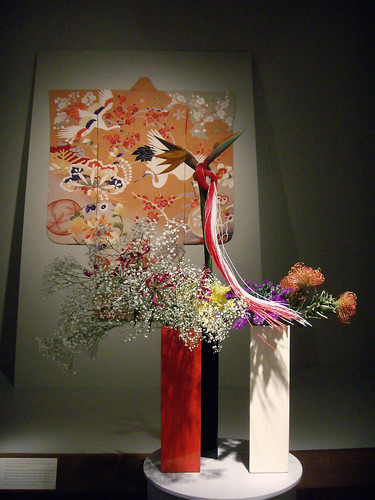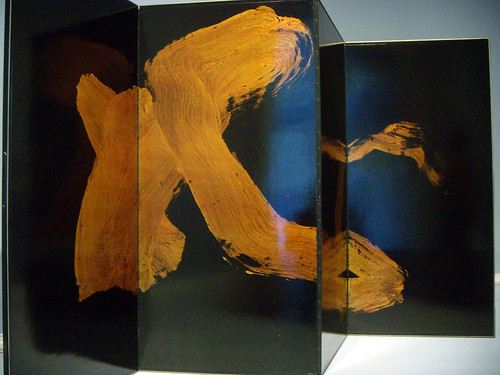I will now share two of my favorite pieces that I saw at the museum (outside of the special exhibits...I believe they are both part of the permanent collection, if I'm not mistaken).

An elegantly displayed kimono, flanked by a floral arrangement that seeks to mimic the life and movement found within its patterns. There were several floral displays created as a part of the Art in Bloom event, including a few ikebana that I absent-mindedly neglected to photograph. I hope to become more knowledgeable of the arts of ikebana and bonsai in the coming months.

This beautiful lacquered screen reminds me of Haruki Murakami's comment about "living language", which I featured in the previous post. The swift, bold, decisive gold brushwork was executed in a way that tells a story about the very object it represents: a birch tree, standing solitary on a steep hill or mountainside. It is moments like this where I am truly awed and intrigued by the art of shodo.
I hope that you will enjoy these exhibits as much as I have.
お元気で。
